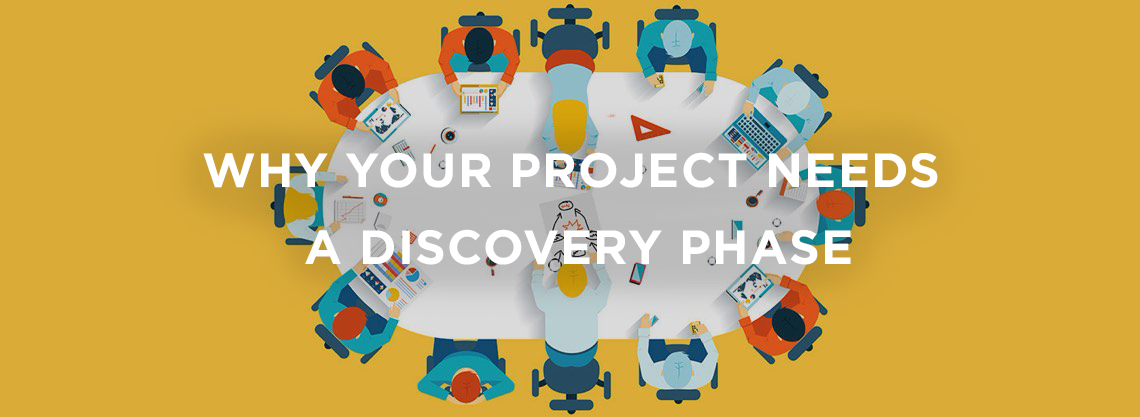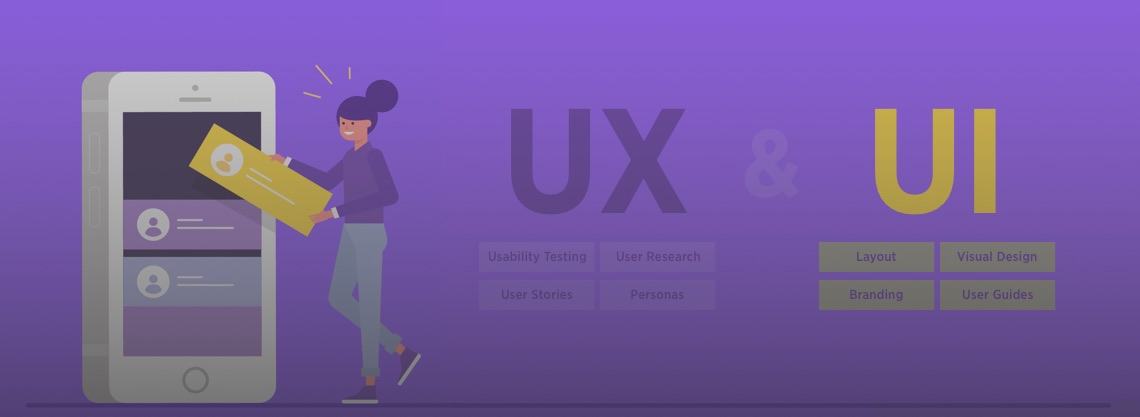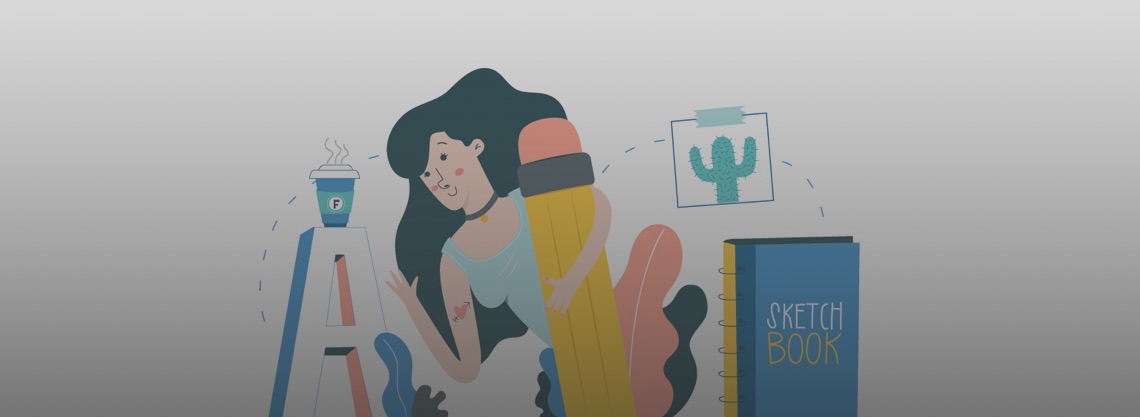A discovery phase of a software project is exactly what can help you come up with the right user experience (UX) design solution. It will allow adding value to the product development process, which is always incremental, as is a complex process of ensuring usability to this product. Incidentally, it is an intelligent UX design that enhances usability and still needs to be looked at from different perspectives. We have previously discussed that a product — be it an application or a website — should be prototyped at the preparatory stage and enhanced with illustrations that are bound to improve the overall consumer perception of the product.
What is a discovery phase in software development?
A discovery phase is a research period which has to mark the beginning of each software project. Thus, it is not prototyping and definitely not illustrating that great design starts with. It should rather begin with the discovery phase. The design is not the art in a proper sense of the word. Not a seamless fusion of creative ideas. Clearly, the design must be all about how the product works from the users’ point of view, what people feel. If an experience is fulfilling, chances are a website or an app is successfully accomplishing business objectives. Therefore, designers should take a critical approach rather than creative.
Since we are on the subject of solving business and marketing problems by means of UX/UI design, it should be emphasized that there are particular steps to be taken yet before diving deep into the design process. Typically, designers take these measures in the initial discovery phase.
Why do research and go through a discovery phase first?
It is much more preferable to make informed decisions instead of wild ones, especially when it comes to running a business. In fact, there is only one way for a business owner to get a clear understanding of what might be done to make the most of the future project and whether the idea is worth making an effort — to go through a discovery phase.
It is much more preferable to make informed decisions instead of wild ones, especially when it comes to running a business. In fact, there is only one way for a business owner to get a clear understanding of what might be done to make the most of the future project and whether the idea is worth making an effort — to go through a discovery phase.
No doubt, literature, music, and art are creative. And some people may argue that the process of generating ideas by the UX team is an equally creative process. However, we believe UX to be rather a scientific practice. Thus, supposing that UX/UI design is only partially an artistic process, we dare say it is not the imagination of a designer exclusively that generates ideas. A preliminary investigation into the attributes of the future product is a must. Consequently, a software discovery process is becoming very similar to doing scientific research whose aim is to integrate findings into a business.
Design thinking in a discovery phase of a software project
A human-centric approach is constantly emphasized when it comes to UX/UI design in all its aspects. At this point, we cannot but mention design thinking. Not only is it a scientific way (similarly with a discovery phase) to discover methods of problems resolving by means of design but also it helps to find out what problems people need to solve and how. Eventually, the product should become more customer-centric and collaborative.
Although ideas tend to be fleeting at times, this fleetingness is the gist of what running design thinking sessions can assist in. In order to create a user-centered design, designers have to understand their customers. To understand customers, they have to do relevant research. Besides, the point of the design thinking is, as obvious as it sounds, in thinking. But about what? These are the key design thinking tenets which can also prove useful when deriving benefits of a discovery phase:
- Users over stakeholders. Sometimes, it seems not that self-evident but every product that is launched in the IT industry is made by people and for people — a user-centric approach in action.
- Practical creativity. Fails are nearly unavoidable. Design thinking means experimentation and active ideation. So, generating as many ideas as possible without expecting them all to be successful is still great.
- Learning through making. This principle is not directly applicable during a discovery phase of a project. Anyway, it is good to learn through making something and getting feedback. There is no super ability to predict what good ideas will look like unless designers start testing them relying on the results received after a discovery phase is passed through.

When design thinking is added as a new dimension to the process at every stage of doing design for applications and websites (a discovery phase inclusively), it should be perceived as an innovative mindset. Based on the above principles, it does not bind designers to a particular structure or approach. They can gather information exploring solutions in parallel or in conjunction with existing design activities. Design thinking gives designers a framework allowing them to be more certain even without knowing answers and forecasting an outcome before setting the ball rolling. Moreover, above, we assumed that it is UX design but not a design thinking approach that adds value. Instead, the latter informs about how to validate generated ideas and come closer to the right solution.
Stages of a project discovery phase
Being itself a preparatory step, a discovery phase of a project can be divided into substeps. By taking them, one will receive nearly all the sought-for answers. Knowing what questions are to be answered during the project discovery process is essential, so we suggest clarifying the following issues before diving deep into the design process:
Identify your users.
-
Understand users.
An understanding phase includes researching into users’ background and characteristics. At this substage, designers should find out what the main traits of future customers are. The aim is to get what problem people would like to solve addressing an alleged application or website. To do so, try to put the ideal user persona into the context of the product use. Then, it must become clearer who these people might be and what their pain points are.
-
Explore users.
These pain points are referring designers to brainstorming and focusing on a few feasible solutions to each presented challenging issue. Thus a team should think laterally focusing on specific user personas and consequently converging on the ideas that make sense. Exploration, in this case, means learning more about the options which emerged in an understanding phase.
Applying acceptance criteria as descriptions of how end-users might use an app/website, refining ideas so that they look realistic, choosing a target market by thinking back to what designers learned about the user personas — these are the activities to be done in an exploration phase. After that, designers must be able to take a fresh look at their ideas, decide which approaches are the most successful, and to select top one to three ideas in order to continue working to make them workable and practical.
-
Gather feedback.
The precise users’ identity cannot be generated at the initial stage but being open to dialogue, engaging friends and colleagues that are similar to the users that you have focused on at two previous stages, asking them about what seems wrong and learning much from what they tell you is the correct strategy.
Nevertheless, collecting feedback is only then possible if the initial hypothesis is good, sound, and testable. That idea must have the potential for gaining value in the course of its adjustment. A hypothesis needs to contain the problem that has to be solved. Designers should start from who the future customers are and not from what features they want to incorporate into their product. So, the users are the central point. They are looking to get help from an application or a website when facing some difficulty under certain circumstances and have the unfavorable consequences prevented.
Who is to benefit from your product? Know your stakeholders.
Having a splendid idea and the right strategy is great as is keeping the users in mind. This idea tends to move from shareholder value to shared value, it is true. Yet, it is a stakeholder who is interested in the outcomes and must be involved in the discovery phase and project planning.
These are business, engineering, and UX representatives from the company of a client or your own. Their opinions reflect what is expected from managers and marketers, development teams, and design teams correspondingly. These people affect and are affected by the outcome. Interviewing them to grasp their point of view is one of the most important parts of the research process.

Size up your competitors.
The next step is competitor analysis. Everybody is to encounter competition for there are too many options for customers to choose from at the global market. Knowing what place you are taking there as well as being aware of your strong and weak points are the key findings of an analysis of this kind. Not only is it commonalities that must be identified, but it is also competitors’ flaws and market gaps you can fill. Then, you are free to analyze and interpret the discovered data for the benefit of the design team and the whole project.
Ensure alignment between user needs and your business goals.
User needs must have been defined at the previous stages. Chances are you have all the relevant information about your future customers in hand by this time. Meanwhile, stakeholders are directly or indirectly pointing at the business goals. It means that now, you should make them meet. There also must be a common understanding among the stakeholders. Sometimes, designers have a vague idea of the business goals. Ensuring that every stakeholder participates in the process starting from the discovery stage is likely to reduce the possibility of misunderstanding to zero.
Journey mapping.
After the research is done, designers can create a model of the user experience as an option. Structured as a so-called prototype of the UX and an experience map, it will make all the findings more vivid and obvious. User journey mapping will be the visualization of all discovered data. It will be a visual overview of the chronological stages of interaction with the product (what users might do, think, feel, and experience) and business opportunities matching business goals (basically, what the business is trying to do.) By creating a journey map, UX/UI designers may assume the discovery phase of a software project completed.
Conclusion
No product owner, software engineer or UX/UI designer wants their job to be useless. Therefore, generating a strong value proposition will help them avoid going in blind. This value is found not while preparing a detailed product design specification. It is defined in a project discovery phase. Step by step, designers can seamlessly arrive at the stage of building a context-aware product. Knowledge is power, so relish the chance to get empowered.

© 2019, Vilmate LLC




